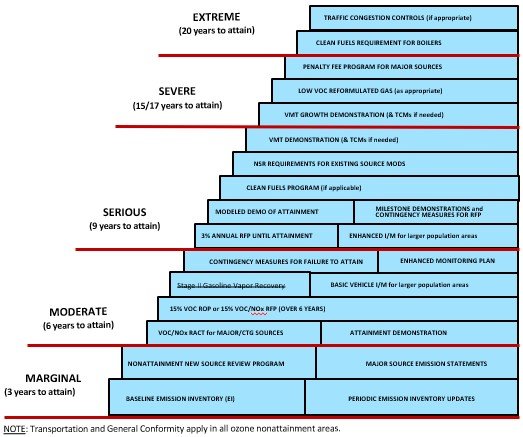Applying or Implementing Ozone Standards
What are state implementation plan (SIP) requirements?
The standards get applied, or implemented, through controlling air pollution from emission sources. Each state is required to develop a plan for how they will control air pollution within their jurisdiction. This plan is called a State Implementation Plan (SIP). In general, the SIP consists of programs, including:
- air quality monitoring
- air quality modeling
- emission inventories
- emission control strategies
- and documents (policies and rules) that the state uses to attain and maintain the NAAQS.
A state must engage the public, through notices and public hearings, before sending the SIP to EPA for approval. Tribes may develop plans if they choose to do so, otherwise EPA will develop an implementation plan for them. Learn more about SIP requirements.
How do states develop SIPs and start attaining the standards?
State, local, and tribal air quality agencies can find assistance in developing their plans to implement ozone standards, using EPA's Checklist Guide to preparing your SIP. Tools include timeframes for submitting parts of the SIP, how to use emissions data to demonstrate progress in reducing ozone, and ozone permitting. If your area is monitoring attainment, please see the Redesignations and Clean Data Policies.
EPA evaluates the submitted SIPs, then issues a notice, indicating that either the SIP has been approved or needs additional work. Once the SIP has been approved, the state implements its air pollution control strategies to gradually reduce ozone pollution.Get information about the SIP status for each state.
Overview of CAA Ozone Nonattainment Area SIP Requirements.
The Clean Air Act (CAA) details specific requirements for nonattainment areas under the ozone National Ambient Air Quality Standard (NAAQS) depending upon the classification of an area. The following table represents the requirements that apply to an area depending on the severity of nonattainment.

